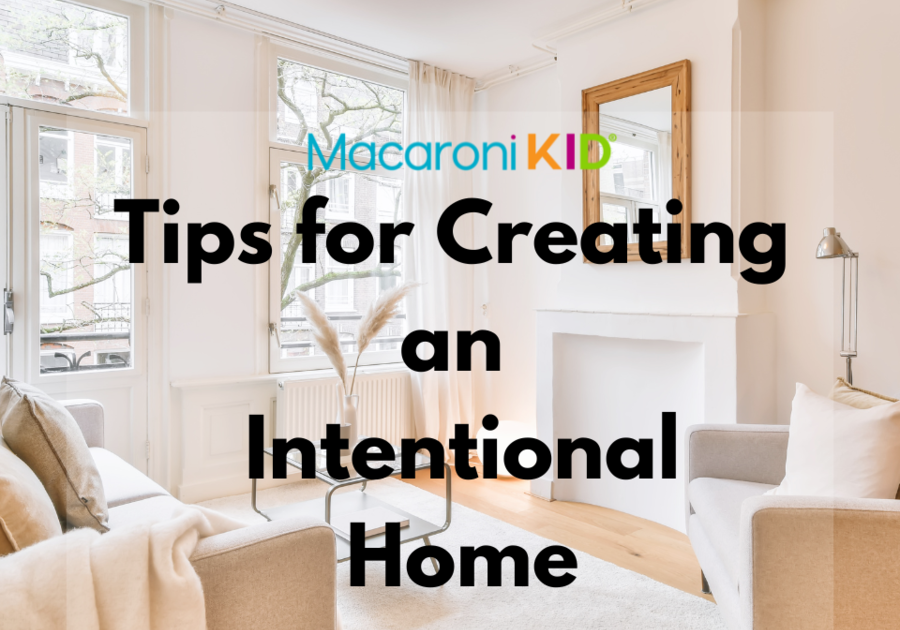The buzzword for 2025 is minimalism for sure! Even on social media reels are now focused on less consumption and more space for time and experiences. I have felt overwhelmed with the amount of "stuff" we have in our home (and garage!), I feel like I spend more time than I want to on picking up and cleaning up. Even with older kids, there is still a large amount of "stuff" to manage and I feel desperate to slow down. This year I am focused on doing more with less, for me that means less social media consumption, less shopping and making space for what I love and want in my space.
As parents, maintaining a home that is both functional and peaceful can be a challenge, especially when toys, art projects, and other "stuff" seem to multiply overnight. The good news is that embracing minimalism — a lifestyle focused on reducing excess and prioritizing only what adds value to your life — can help you regain control of your space and your sanity. Here are some tips for reducing clutter, managing kids' art projects, and experiencing the psychological benefits of a simpler, more intentional home.
Start Small: Declutter One Area at a Time
When it comes to decluttering, tackling the entire house at once can feel overwhelming. Start small by focusing on one area at a time — this could be a closet, a toy chest, or even a countertop. By breaking down the process into manageable tasks, you’ll avoid feeling defeated before you even begin. Here's how to get started:
- Sort and Purge: Take everything out of the space and sort items into categories. Ask yourself: Does this item serve a purpose? Does it bring joy or add value? If not, let it go. Donate, sell, or toss anything that no longer serves your family.
- Create a Home for Everything: After decluttering, organize what’s left. Keep frequently used items easily accessible and find a specific place for each item to prevent clutter from accumulating again.
Manage Kids' Art Projects
Children's art is a beautiful way to foster creativity, but it can quickly accumulate into a mountain of drawings, paintings, and craft projects. Managing these treasures without creating chaos in your home is key to reducing clutter while still honoring your child's creativity.
- Create a Display Area: Dedicate a small wall or bulletin board to showcase a rotating selection of your child's artwork. You can change it out every week or month, keeping only the pieces that are most meaningful or impressive.
- Digitize Their Creations: For the pieces you want to keep but don’t have the space for, consider photographing or scanning them. You can store these images digitally or create an annual photo book to preserve the memories in a compact form.
- Set Limits: Encourage your child to select their favorite pieces to keep, and gently let go of the rest. This teaches them the value of curation and allows you to prevent overwhelming piles from building up.
Embrace “One-In, One-Out” Rule
A great way to keep clutter from creeping back in is by adopting a “one-in, one-out” rule. This means that for every new item brought into your home — whether it’s a new toy, piece of clothing, or household gadget — another item must leave. This rule not only prevents excess but also helps your family become more intentional about their possessions. By evaluating each new item and the space it will occupy, you’ll make better purchasing decisions and keep clutter at bay.
Simplify Your Children’s Toys
Toys can easily dominate a home, but kids don’t need a plethora of items to stay entertained or engaged. Simplifying their toy collection can have significant benefits, both for your home’s organization and your child’s development.
- Quality Over Quantity: Choose a few high-quality toys that encourage open-ended play, creativity, and learning. Wooden blocks, art supplies, and interactive toys can be more engaging than large amounts of plastic, battery-powered items.
- Rotate Toys: Keep a smaller selection of toys out at a time and store the rest away. Every few weeks, swap out the toys to give your child a fresh batch of options to explore.
- Donate Regularly: Make it a habit to sort through toys and donate those that are no longer used. Involve your children in this process to teach them the value of giving and decluttering.
Create Routines for Daily Maintenance
Once you've decluttered your home, it's essential to maintain your space. Establishing routines with your children can help keep clutter from creeping back in.
- Daily Cleanup: Set aside a few minutes at the end of each day for the entire family to tidy up. Make it a fun activity by turning it into a game or playing music while you clean.
- Set Expectations: Teach your children the importance of returning items to their designated places after they’re done using them. This simple habit will keep things from piling up.
The Psychological Benefits of Decluttering
Embracing minimalism isn’t just about having a tidy home; it can also have profound psychological effects that benefit your whole family. Here's how reducing clutter can improve mental and emotional well-being:
- Reduced Stress: A cluttered home can contribute to feelings of stress, anxiety, and overwhelm. By simplifying your space, you create a more peaceful environment that encourages relaxation and focus.
- Improved Focus and Productivity: When there is less visual distraction, your family members, especially children, can concentrate better on tasks. Minimalism promotes clarity, leading to greater productivity in daily activities, homework, and chores.
- Enhanced Family Connection: With fewer material distractions, you and your children can focus more on meaningful activities — whether it’s reading together, playing outside, or simply having a conversation. This strengthens relationships and creates a deeper sense of connection.
- More Time for What Matters: By eliminating the need to constantly manage clutter and organize stuff, you free up time for things that truly matter, like spending quality time with your family, pursuing hobbies, or simply relaxing.
Practice Mindful Consumption
As you embrace minimalism, consider adopting a more mindful approach to purchases and acquisitions. Before buying something new, ask yourself whether it will add value to your life or just take up space. You may find that you’re able to enjoy more with less, which can lead to a more fulfilling and sustainable lifestyle for you and your family.
Reducing clutter and embracing minimalism doesn’t mean you have to get rid of everything you love or live in an empty, sterile home. Instead, it’s about being intentional with the things you own and prioritizing what truly adds value to your family’s life. By decluttering your space, organizing your children’s toys and artwork, and cultivating mindful habits, you’ll create a home that fosters peace, creativity, and connection. With less stuff to manage, you’ll have more time and energy to focus on what matters most: each other.
In my pursuit of a more minimal life, I am embracing the help of ChatGPT to help me write articles



